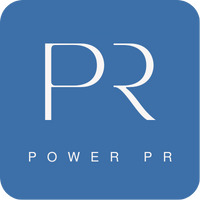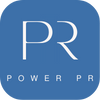Trade Publications Remain Prime Target for Industrial Marketing, Branding
As trade magazines expand influence through online portals, the ability to target specific industrial prospects through feature length articles remains one of the most profitable forms of branding and lead generation
Despite the increased focus on social media, tried-and-true industrial trade publications remain one of the best tools for reaching targeted industrial audiences. Now, as trade magazines continue to spread their influence through online portals, this influence is only getting stronger.
With general content and articles that dominate major search engine rankings, trade publications are no longer simply about what goes in print.
Today’s trade publications now have sophisticated online portals that offer magazine issues in digital edition format (flipbooks, laid out like the magazine) as well as greatly expanded online content that goes far beyond the information found in the pages of the latest print issue.
For the generation that searches for much of its information online, these articles can get more “eyes” on them than ever before, often appearing at the top of the major search engine rankings.
Within the posted content, which can range from news and new product announcements to industry trend articles, the holy grail of coverage are feature length (800 or more words) editorial articles that inform and educate the market while also potentially promoting a client’s product or service.
When objective third parties are quoted, this type of feature article coverage can be one of the most powerful, credible forms of marketing in the industrial space today.
“Trade magazine coverage – both print and now increasingly online – can deliver a powerful combination of branding along with direct lead generation,” says Jeff Elliott of Power PR, a company that for 27 years has written and facilitated placement of editorial features in industrial and commercial trade magazines.
By way of example, Elliott cites the case of EonCoat, a developer and manufacturer of a new type of VOC-free, protective coating that prevents corrosion at industrial facilities.
The longtime client of Power PR has benefitted from more than 200 articles in trade magazines print and online about its unique product offering. Over time, these articles have generated significant awareness and a substantial quantity of qualified leads.
However, when a target prospect from a major water works company requested a meeting, Merrick Alpert, EonCoat’s president, says he was “stunned” when the engineer walked into the meeting with a prestigious trade magazine open to a feature article about his product and said, “This is why we contacted you. This is why we are here.”
Alpert says the engineer then began to refer to specific content in the article: Here are some tanks you coated that are similar to ours; this person in the article was quoted as saying the coating eliminated rust, here are the benefits we like about your product…
“The prospective customer had not only read the article, but also really internalized the benefits of the product that were reflected in the article,” says Alpert.
According to Elliott, this is the power in feature length editorial coverage – the ability to explain in depth the value proposition of a product or service; to explain why a prospect should pay more for a product upfront because it saves money in the long run; to explain how a difficult-to-understand product works; or simply to create awareness for a product that is not known in the industry.
“Many industrial companies have products that are ‘the best kept secret’ in their industry and they want to change that through feature length editorial articles in trades,” explains Elliott.
The brass ring, however, is when these editorial articles include testimonial quotes that serve as credible third party endorsements.
“There probably is no type of industrial marketing that is more credible than an article that includes testimonials,” says Elliott. “What that means is you can essentially harness the power of word-of-mouth and force multiply it out to a massive, targeted audience of prospects.”
Best of all, in many cases posted trade articles remain online and at the top of the search engine results for years.
So how do industrial companies secure feature article coverage in the trades?
There are many avenues for generating feature article coverage, including directly approaching editorial staff, leveraging advertising buys or working with PR companies that facilitate such coverage.
It also helps if the product in question is unique in some way, increasing its news value to editors. If it is not, then the article needs to successfully differentiate the item from the rest of the market.
“Some manufacturers have a hard time initially verbalizing what is unique or interesting about their product. However, by going through a process of examining the primary benefits and how the product is different than other options on the market, this can often be formulated and included in articles.
The secret, though, is to give the trade magazine what it wants – valuable content that informs and educates the market and not a blatant PR piece.
“Trade magazines do not care about promoting a specific product or service. They want well-written, interesting and newsworthy editorial content,” explains Elliott. “However, if done correctly it is possible to include details of the benefits of a product and even testimonials within the context of such articles.”
This “skill” in writing full length features that serves both the goals of the magazine and includes some promotion is one refined over time based on experience working with editors and understanding what will be seen as “too much.”
“Most companies have hit a ceiling where the only types of articles they post on their sites or get in trade magazines are short news articles or product releases that are 2-5 paragraphs long with a photo,” says Elliott. “These types of articles are more of a ‘formula’ and really don’t impart much information.
In short, the ability to create feature length editorial style articles requires a different approach and level of expertise. But when done properly, feature articles can be a win-win situation for both trade magazine and industrial company looking to promote its product.
“As trade magazines continue to grow in influence and scope online, they remain one of the most trusted information sources for today’s engineers, buyers, plant managers and manufacturers. And that’s still the name of the game today – getting valuable, well-written information in front of potential prospects.”
For more info about Power PR call (310) 787-1940, email jwe@powerpr.com or visit www.powerpr.com.

